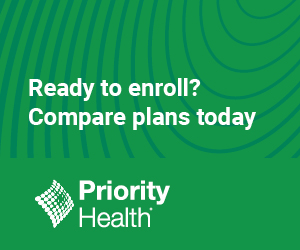In many ways, Medicare and Medicaid grew from the same tree. Both programs aim to provide affordable health care options for specific groups of people. They were even created by the federal government because of the same Social Security Amendments of 1965. However, they also have their differences. ThinkHealth is here to help you thoroughly understand both government programs so you can distinguish them once and for all.
What is Medicare?
Medicare is a federal program that provides health insurance for Americans who are 65 years old and older. It also provides health insurance for younger Americans with disability status, end stage renal disease and ALS (more commonly known as Lou Gehrig’s disease). Medicare benefits are separated into four parts: Part A, Part B, Part C and Part D.
Original Medicare is health care managed by the federal government. It includes hospital coverage (Part A) and coverage for medical services, like doctor visits and tests (Part B). Original Medicare only covers 80% of health care costs, leaving individuals responsible for the other 20%. A separate prescription drug coverage (Part D) is also needed to cover prescriptions, and there is no limit to the amount of money one could pay out-of-pocket as part of the 20% of costs that Original Medicare does not cover.
To help cover the costs Original Medicare doesn’t pick up and to put a limit on the amount of money one could pay out of pocket, many people turn to a Medicare Advantage Plan or Medigap plan. Learn more about Medicare Advantage and Medigap plans here.
Medicare Advantage plans (Part C) are plans that combine Medicare Parts A and B. Medicare Advantage plans cover everything Original Medicare covers, plus extra benefits and services. When a Medicare Advantage plan includes Part D (coverage for prescriptions) this is called an MAPD plan. With a MAPD plan—hospital, doctor and prescription costs are covered, plus it includes extras like gym memberships, dental, vision, hearing and more.
Medigap works in conjunction with Original Medicare—it fills in the gaps that Original Medicare doesn’t cover (like that remaining 20% of costs). Medigap plans don’t come with the extras offered in Medicare Advantage plans. There are 12 standard Medigap plans (named plan A through N), but not all insurance companies offer all of them. Medigap plans are standardized across the country, so all plans offer the same benefit structure—the main difference between them is in the monthly premium cost and customer service quality. Medigap plans don’t include prescription coverage, so a separate prescription drug plan (PDP) will be needed.
What is Medicaid?
Medicaid is a state and federal program that provides health insurance for people of all ages with insufficient income to cover their health care costs.
Signed into law in 1965, Medicaid is a state and federally-funded program that provides health coverage to eligible low-income adults, low-income individuals age 65 and older, children and people with disabilities. As of September 2019, 72 million Americans are enrolled in Medicaid, making it one of the largest sources of health care funding in the U.S. In Michigan, about 2.7 million people have Medicaid. It also helps pay for benefits that Medicare doesn’t usually cover, like nursing homes or personal care. Patients with Medicaid often pay no part of their medical expense costs and often only a small co-pay. Medicaid bills are paid from federal, state and local tax funds.
Most people on Medicaid get their insurance through a private insurer, like Priority Health. Insurance companies such as Priority Health work with the government to provide Medicaid services through their network of doctors and hospitals. There’s a list of services required by law to be covered. States can also choose to cover more services like dental care, vision and physical therapy. Read more about Medicaid here.
Can a person be on Medicare and Medicaid at the same time?
Some people qualify to be on both Medicare and Medicaid at the same time. Those enrolled in both programs may qualify to have their benefits rolled into one simple health plan known as a Dual Eligible Special Needs Plan, or D-SNP. Insurers like Priority Health offer a D-SNP plan across the state of Michigan that provides all of the coverage provided by both Medicare and Medicaid, plus extra features and benefits at no extra cost. This includes prescription coverage, dental, vision and hearing coverage, an over-the-counter allowance for drugs and health products, care management services, a gym membership and more.
The best way to differentiate the two? Age and income.
An easy way to remember the difference is by thinking of it this way: Medicare is for elder care. Medicaid provides aid to those with a low income. Medicare and Medicaid are two options to provid e individuals with health care coverage. The key difference between the two is age and income.
e individuals with health care coverage. The key difference between the two is age and income.
Medicaid serves eligible low-income individuals at every age, including adults, children, pregnant women, elderly adults and people with disabilities. Medicare provides health coverage if you are 65+ or under 65 and have a disability, no matter your income.
If you are eligible for both Medicare and Medicaid (dually eligible), you can have both. They will work together to provide you with health coverage and lower your costs.
To learn about your eligibility, visit Michigan.gov or meet with an agent. You can also shop Priority Health Medicare and Medicaid plans and compare both plans here.



